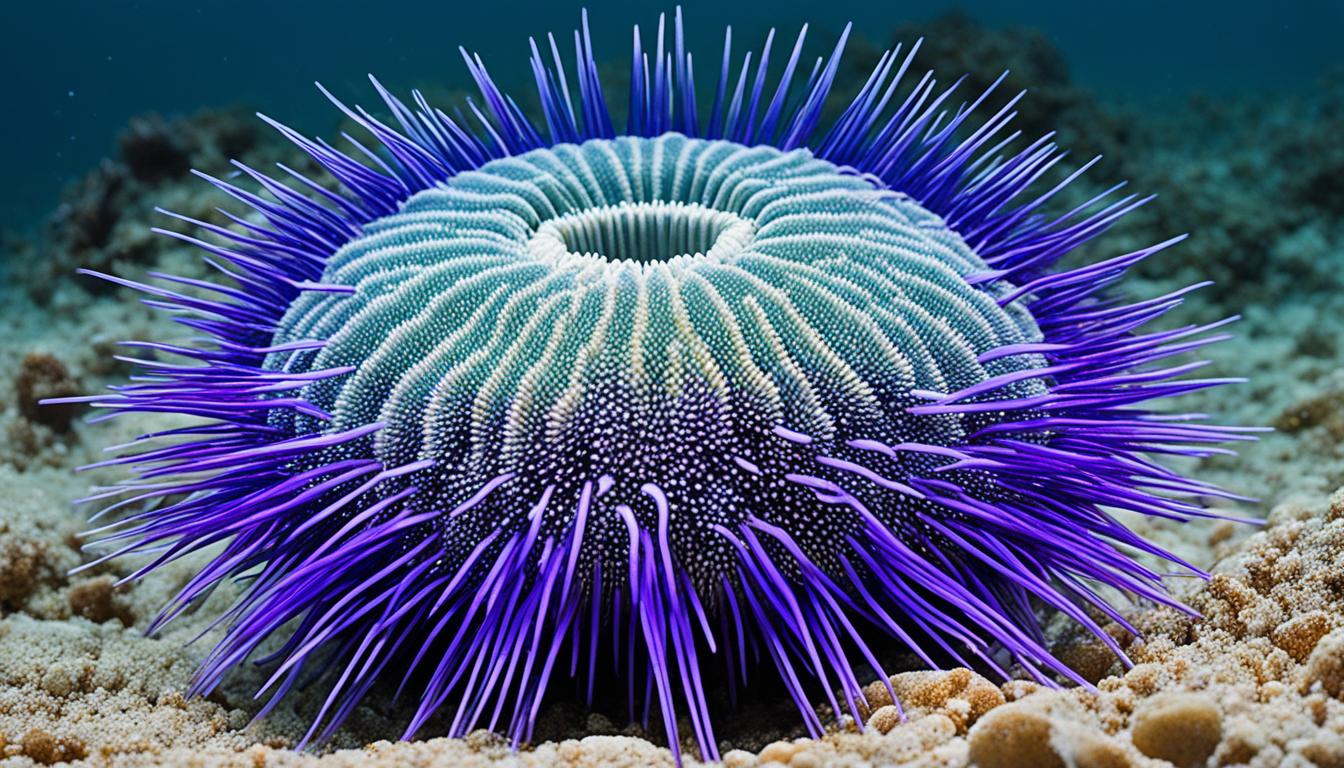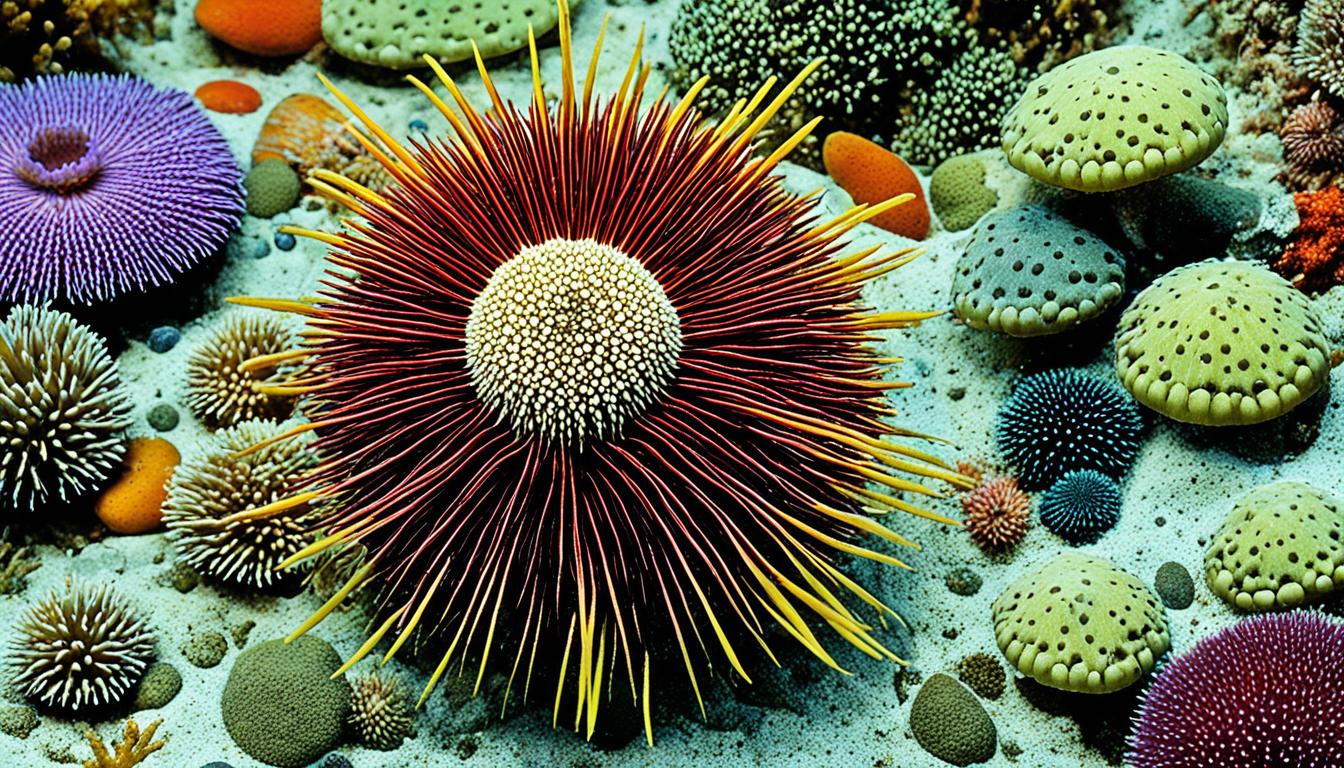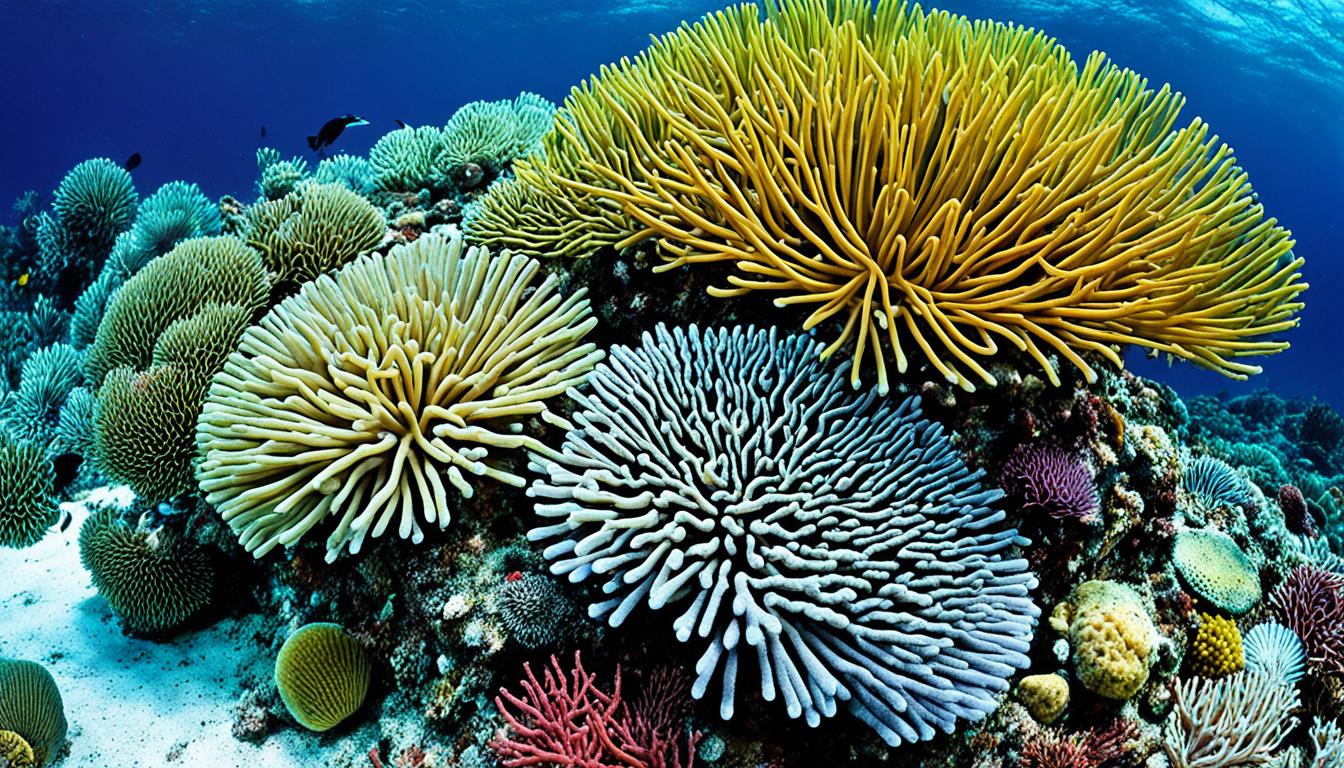Have you ever asked, are all jellyfish venomous? This question leads us to a world full of interesting facts about jellyfish. Some jellyfish have venom that can hurt or even kill people. But, others are safe and don’t harm humans at all.
It’s important to know about these creatures and their venom to stay safe, especially if you like the beach or love the sea. In this article, we’ll look into the world of jellyfish. We’ll see how some are poisonous and clear up myths about these amazing sea creatures.
Understanding Jellyfish and Their Biology
Jellyfish are fascinating creatures that play a big role in marine life. They belong to the phylum Cnidaria, just like sea anemones and corals. Their bodies are gelatinous and don’t have a traditional brain. Instead, they have simple nerve nets and special senses that help them feel their surroundings.
This unique biology lets them react to things and interact with their environment. Jellyfish come in many sizes and colors, making them interesting in the ocean. Knowing about their biology helps us understand their role in nature and why some can be dangerous.
Are All Jellyfish Venomous?
It’s important to know the difference between venom and poison when talking about jellyfish. They are not the same thing. This knowledge is key when we talk about jellyfish stings and their effects.
Defining Venom and Poison
Venom is a special toxin that some animals use to harm others. Poison, on the other hand, is harmful if you eat it or touch it. This difference is important when we look at how jellyfish can be dangerous.
Jellyfish use venom to protect themselves or catch food. Knowing about jellyfish venom helps people stay safe at the beach.
The Role of Nematocysts in Jellyfish
Nematocysts are tiny cells in jellyfish that shoot out venom. They live on the jellyfish’s tentacles and sting when they touch skin. These stings can be mild or very serious, depending on the jellyfish.
Learning about nematocysts helps us see why some jellyfish are more dangerous than others.
Types of Jellyfish and Their Venom Potency
Jellyfish are fascinating creatures with a wide range of behaviors and characteristics. Their venom types vary greatly. Some have strong venom, while others are harmless to humans. It’s important for beachgoers and swimmers to know these differences to stay safe.
Highly Venomous Varieties
The world’s most dangerous creatures include highly venomous jellyfish. The box jellyfish (Chironex fleckeri) is known for its deadly venom. It can cause paralysis and heart arrest in minutes. The Irukandji jellyfish, despite being small, has venom that can be life-threatening.
These species highlight the need to watch out for jellyfish while swimming in coastal waters.
Non-Venomous and Harmless Species
There are also non-venomous jellyfish that don’t pose a threat to humans. The moon jellyfish (Aurelia aurita) is a good example. It’s often found in warm coastal waters and its sting is mild, barely noticeable.
Knowing about these safe species can make your beach trips more enjoyable. It also helps you avoid unnecessary worry.
| Jellyfish Type | Venom Potency | Effects on Humans |
|---|---|---|
| Box Jellyfish | Highly Venomous | Paralysis, Cardiac Arrest |
| Irukandji Jellyfish | Highly Venomous | Severe Pain, Potentially Fatal |
| Moon Jellyfish | Non-Venomous | Mild Sting |
| Lion’s Mane Jellyfish | Moderately Venomous | Painful Sting |
Common Jellyfish Species and Their Effects on Humans
Different jellyfish species have varying impacts on human health. The box jellyfish is especially dangerous because of its strong venom. It’s important to know about these dangerous jellyfish if you go to the beach.
Box Jellyfish: The Most Dangerous
The box jellyfish is seen as the most dangerous jellyfish worldwide. Its venom can lead to heart arrest in some cases. These jellyfish live in tropical waters and can be a threat to swimmers and people at the beach. Knowing how to spot them can help you stay safe.
Understanding Irukandji Syndrome
Irukandji syndrome comes from the sting of a small jellyfish called Carukia barnesi. Those who get stung feel a lot of pain, nausea, and other bad symptoms. The effects of getting stung can be mild or very serious. It’s important to know the signs of this syndrome to be ready for dangers in the ocean.
Jellyfish Stings: Symptoms and Treatments
Meeting jellyfish can cause different reactions, often based on the type. It’s key to spot jellyfish stings symptoms early for the right treatment. Symptoms can be mild or severe, sometimes needing quick medical help. Knowing these signs helps you stay safe and reduce pain.
Typical Symptoms of Jellyfish Stings
After a sting, you might feel several symptoms that can vary. Here are common signs:
- Redness and inflammation at the sting site
- Shooting pain or burning feeling
- Itching or rash
- Nausea or vomiting
- Difficulty breathing or swallowing in severe cases
Don’t ignore these symptoms, especially if they get worse or are serious. Knowing how to react can make a big difference.
First Aid for Jellyfish Stings
For a jellyfish sting, acting fast with first aid can ease pain and prevent more issues. Here’s a helpful guide:
- Rinse the area with vinegar, especially for box jellyfish.
- Use tweezers to remove any remaining tentacles.
- Soak the affected area in hot water for 20 to 45 minutes to lessen pain.
- Get medical help for severe symptoms like trouble breathing, chest pain, or big skin reactions.
Learning about jellyfish sting treatments can help you handle situations well. Quick and smart actions in emergencies can improve recovery.
| Jellyfish Stings Symptoms | Treatment |
|---|---|
| Redness and inflammation | Rinse with vinegar |
| Pain or burning sensation | Hot water immersion |
| Itching or rash | Cold compress |
| Nausea or vomiting | Hydration and medical assistance |
| Severe reactions | Immediate medical attention |
Knowing these steps and using effective first aid for jellyfish can make encounters better. Staying safe and informed is key.
Jellyfish in Different Regions: Safety and Precautions
When you’re in the U.S. waters, knowing about the local jellyfish is key. Some jellyfish in the U.S. can be dangerous to swimmers and beachgoers. It’s important to know which ones and how to stay safe.
Dangerous Jellyfish Species in the U.S.
In U.S. waters, some jellyfish are more dangerous because of their strong venom. Here are a few you should watch out for:
- Box Jellyfish: Its sting can be deadly, found mostly in southern coastal areas.
- Portuguese Man o’ War: Not a true jellyfish but its sting hurts a lot.
- Moon Jellyfish: Usually not dangerous, but can sting and hurt.
How to Stay Safe While Swimming
To avoid jellyfish while swimming, follow these safety tips:
- Check local beach advisories for jellyfish warnings before swimming.
- Wear protective gear like wetsuits or rash guards to lower sting risks.
- Keep an eye out for jellyfish in the water and on the beach.
- Learn the signs of jellyfish stings so you can act fast if needed.

Recent Research on Jellyfish Venom
Recent studies have uncovered the mysteries of jellyfish venom. They’ve looked into how jellyfish venom has evolved over time. This is key for understanding these venomous creatures better.
The Evolution of Jellyfish Venom
Studying jellyfish venom’s evolution requires combining biology, genetics, and ecology. We’ve learned how jellyfish have changed over millions of years. They’ve made their venom better for catching prey and defending themselves.
This shows how unique each jellyfish species is. It also opens doors for using their venom in medicine.
Future Studies and Antivenom Development
Research is pushing forward to find treatments for jellyfish stings. Scientists are working on making antivenom jellyfish. They aim to lessen the sting’s harm.
They’re also looking into using jellyfish venom for pain relief and other health issues. This shows a growing interest in jellyfish venom’s benefits.
| Research Area | Description | Impact |
|---|---|---|
| Evolution of Jellyfish Venom | Studies on genetic adaptations and diversification of venom across species | Understanding evolutionary mechanisms may inform conservation and ecological balance |
| Jellyfish Venom Composition | Analysis of toxic components and their respective functions | Development of targeted therapies for human applications |
| Antivenom Development | Research on antibody responses and antivenom formulations | Improved safety and efficacy in treating jellyfish stings |
Myths and Misconceptions About Jellyfish
Many people have wrong ideas about jellyfish. One big myth is that all jellyfish are dangerous. While some, like the box jellyfish, can be venomous, most are harmless to humans. Knowing this can help us see jellyfish in a new light and understand their role in the ocean.
Some think jellyfish are too simple to study because of their structure. But, they are actually quite complex. Scientists have made big discoveries about their biology in recent years. These findings show us how jellyfish live, behave, and even how their venom could help in medicine. This knowledge helps us see jellyfish in a new way.
By clearing up these wrong ideas about jellyfish, we can appreciate the ocean more. We learn that not all jellyfish are a threat and discover the science behind them. This knowledge helps us stay safe in the ocean and protects it for the future. It lets us enjoy the sea with more respect for its creatures.










